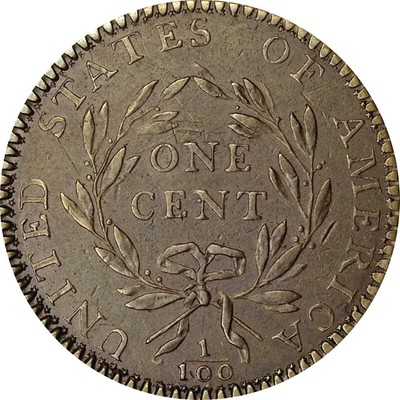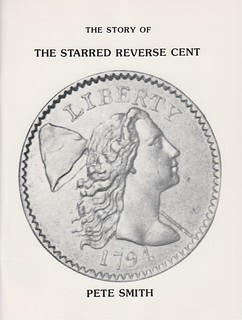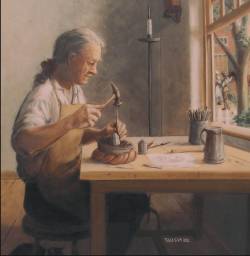
PREV ARTICLE
NEXT ARTICLE
FULL ISSUE
PREV FULL ISSUE
THE 1794 STARRED REVERSE CENTDoug Nyholm published an article on the 1794 Starred Reverse Cent in the May 2020 issue of The Mint Master from the Utah Numismatic Society. With permission, we're republishing it here. Thanks! -Editor
There has been much written regarding this coin but very little is known about the why's other then conjecture and guessing. Large cents have been collected and favored by collectors as far back as the time when they were being minted and later gained a large following after their discontinuance in 1857. Several monologues were written, and varieties identified but this Starred Reverse was not discovered until 1877, twenty years after the last large cent was minted. The discovery is amazingly documented as follows: In 1877 Henry C. Chapman, along with his brother S. Hudson Chapman, who were well known coin dealers and auctioneers along with Dr. Edward Maris, a Quaker physician were examining a group of large cents and one was picked up and Chap-man exclaimed, "Here is a die with minute stars around the reverse." Dr. Maris, an expert at the time on early coppers stated that 'this was previously unknown." This discovery coin was later offered on Feb 11-12 in 1880 by the Chapman brothers auction as part of the Samuel A. Biuspham Collection. 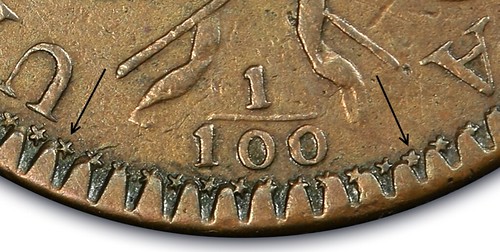
Within several years two others were discovered and as of today approximately 60 of this Sheldon S-48 are known to collectors. The 94 stars are punched among 83 denticles which are not evenly spaced between the denticles due to the different numbers, seven of them are even hidden under some of the denticles while only two are completely visible Most of the known examples are all in low grade with the finest grading PCGS AU-58, four others grade VF, a few Fines while the others are quite worn. In the past few decades several have actually been cherry-picked from hoards or groups of lower grade large cents and I suspect there still may be a few hiding out there.
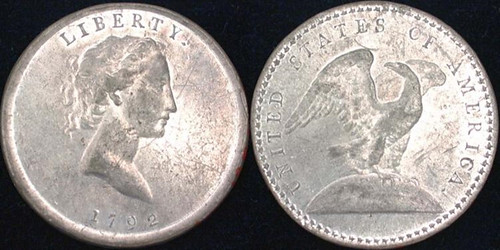
One of the more interesting, and possible plausible theories, is the one regarding the Wright pattern 1792 Eagle on Globe pattern quarter dollar. This pattern is of similar size to a large cent (both have a diameter of 29 mm) and this quarter pattern has a boarder of 87 small stars of roughly the same style. There are differences in the stars and they are not punch-linked to each other. From 1792 to 1794 there was certainly experimentation and trials and patterns which were struck at the fledgling mint. The starred reverse cent may have simply been nothing more than one of these experiments with border ornamentation. Unless some long-lost document or information is uncovered, we will probably never know for certain what was intended. In the meantime, the S-48 cent is of great numismatic interest and value with the AU specimen selling for $632,000 in Feb. of 2008 at a Heritage auction. Author Pete Smith adds:
My most recent update of the census was published in the January 2020 issue of Penny-Wise. The estimate of known examples of the Starred Reverse Cent now stands at 72 examples." To visit Al Boka's web site, see: Wayne Homren, Editor The Numismatic Bibliomania Society is a non-profit organization promoting numismatic literature. See our web site at coinbooks.org. To submit items for publication in The E-Sylum, write to the Editor at this address: whomren@gmail.com To subscribe go to: https://my.binhost.com/lists/listinfo/esylum All Rights Reserved. NBS Home Page Contact the NBS webmaster 
|
